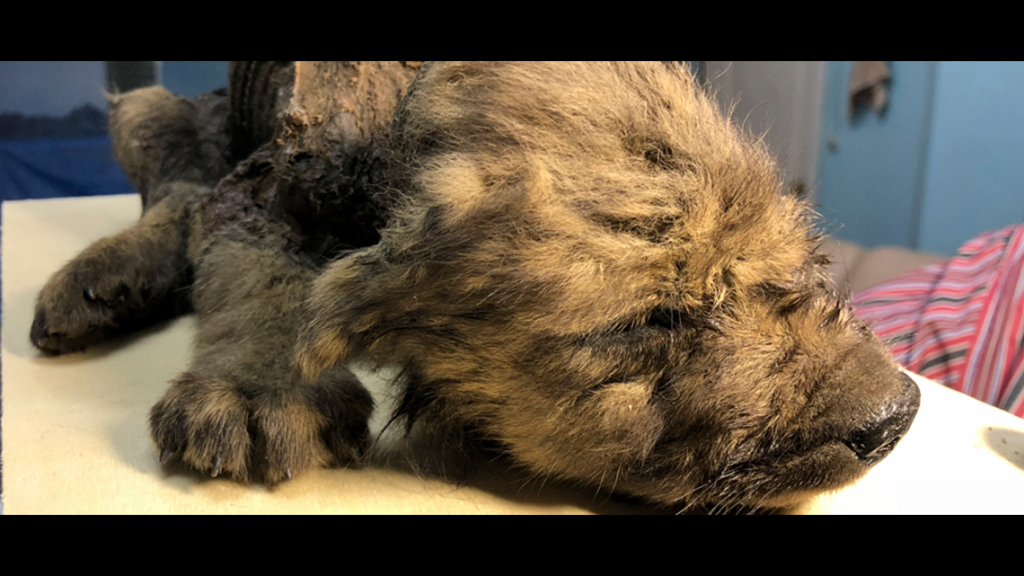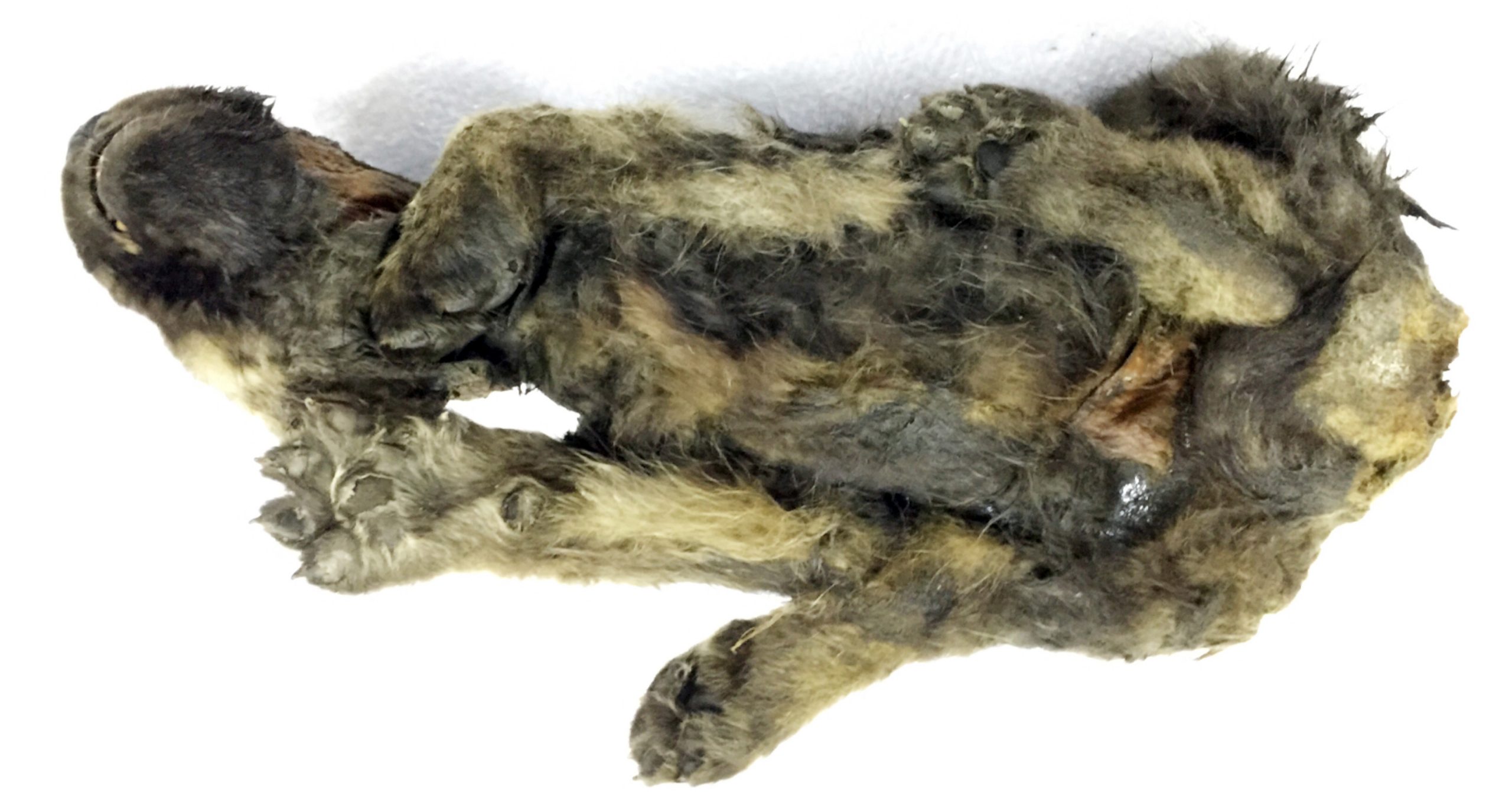 he story of an 18,000-year-old frozen puppy has recently been uncovered in Siberia by a team of researchers. This discovery of a prehistoric canine is remarkable for its level of preservation and the insight it provides into the evolution of dogs. Scientists were able to analyze the puppy’s remains to determine its gender and diet, which further helps us understand how dogs have developed over time. In this article, we will look at the incredible discovery of this ancient puppy, how it was preserved, what analysis of its remains can tell us and how similar discoveries could lead to further study.
he story of an 18,000-year-old frozen puppy has recently been uncovered in Siberia by a team of researchers. This discovery of a prehistoric canine is remarkable for its level of preservation and the insight it provides into the evolution of dogs. Scientists were able to analyze the puppy’s remains to determine its gender and diet, which further helps us understand how dogs have developed over time. In this article, we will look at the incredible discovery of this ancient puppy, how it was preserved, what analysis of its remains can tell us and how similar discoveries could lead to further study.
The Discovery of the Puppy
In the summer of 2018, a remarkable discovery was made in Yakutia, Siberia. A team of researchers unearthed the 18,000-year-old remains of a puppy belonging to an extinct species of prehistoric dogs known as the Pleistocene wolf. To verify its age, scientists relied on radiocarbon dating and DNA analysis – the results confirmed that this puppy is indeed 18,000 years old!
This incredible find provides valuable insight into the evolution of man’s best friend and could potentially lead to further study into its genetics and ties to modern dog breeds. It serves as a reminder that canines have been around for thousands upon thousands of years—a bond that will surely continue for many more generations!
The fact that these remains were so well-preserved allows us to learn how ancient tribes interacted with animals. From understanding what it ate and its gender identification, we can begin to comprehend how early man viewed their canine companions—as treasured members of their tribe or even part of their family unit.
This discovery is truly momentous and grants us an opportunity to gain knowledge about our furry friends from centuries past! It is currently stored in a frozen state at a research facility in Yakutsk, Russia; hopefully one day soon it will be available for public viewing so everyone can appreciate this amazing piece of history.
How the Puppy Was Preserved
Discovered in an area of Siberia known as the “Mammoth Steppe” by a team of researchers from Russia, South Korea, and Sweden, the 18,000-year-old frozen puppy was found in remarkable condition. Thanks to the region’s climate and permafrost, the puppy had been perfectly preserved for nearly two millennia.

Upon discovery, radiocarbon dating and DNA analysis were used to confirm that the puppy had indeed lived during the ancient era of ice age mammals. Further examination revealed that it was male, furthering our understanding about prehistoric dogs. The results also showed that its diet consisted primarily of reindeer and horse meat.
The findings have provided valuable insight into how ancient humans interacted with their surroundings and animals alike. It has also granted researchers an opportunity to study canine evolution over thousands of years in a way that would not have been possible without this remarkable discovery.
The puppy is currently stored in a frozen state at a research facility in Yakutsk, Russia where scientists can continue to learn more about its history and genetics. This incredible find may even lead to further studies on links between ancient species and modern day breeds!
Analysis of the Puppy’s Remains
Analysis of the Puppy’s Remains provides a fascinating glimpse into the life and habits of this ancient canine. By studying the puppy’s teeth, bones, fur, and stomach contents, researchers were able to piece together a picture of its life story.
The age was determined from the teeth, indicating that it was an adult when it died. The bones showed signs of regular nourishment throughout its lifetime. Furthermore, grooming with a brush or comb suggested that it may have been kept as a pet by humans. Analysis also confirmed that it was female and likely a wolf-dog hybrid.
The stomach contents revealed further insight into its lifestyle – mainly consuming reindeer and horse meat – providing an interesting look into how ancient tribes interacted with animals in their environment for both sustenance and companionship.
This 18,000-year-old frozen puppy can offer valuable information about canine evolution which could lead to more research on its genetics and connections to modern breeds. With today’s technology, scientists are now better equipped than ever before to investigate samples like these in order to uncover secrets of animal behavior from centuries ago.
What This Finding Means to Scientists and Dog Lovers Alike
What This Finding Means to Scientists and Dog Lovers Alike The discovery of the 18,000-year-old frozen puppy has implications for both scientists and dog lovers alike. For scientists, this amazing find provides an opportunity to gain a better understanding of the evolution of dogs. It also indicates that domesticating animals occurred much earlier than previously thought. The fact that the puppy was so well-preserved gives researchers valuable insight into ancient canine diets, lifestyles, and health.
For dog lovers, this discovery is just as fascinating as it reveals more information about their beloved companions. Many pet owners can appreciate the connection between human beings and ancient dogs that this finding highlights. Furthermore, they may be interested in learning how breeds have evolved over time and how their own fur babies are related to prehistoric creatures.
The puppy also presents an exciting opportunity for further study of its genetics and potential links to modern breeds. By examining its DNA more closely, scientists may be able to understand more about canine development over time, which could help us to better care for our furry friends today. Ultimately, these findings can help us all to appreciate our animal companions even more deeply and create stronger bonds with them based on newfound knowledge about our shared history.
Similar Discoveries of Ancient Canines
In recent years, there have been multiple fascinating discoveries of ancient canine remains. One of the earliest was a seven-year-old fossilized dog found in Siberia, which was the oldest known remains of a domesticated dog dating back to a time before the Last Glacial Maximum. Scientists were also able to uncover an almost complete skeleton of a wolf-like canid found in the Altai Mountains of Russia.
Another notable discovery was that of a 12,400-year-old Rottweiler-type dog uncovered in Germany. This find provided valuable insight into how early cultures cared for their dogs, as this breed is believed to be one of the oldest and most primitive breeds in existence today.
In addition, researchers found an 11,000 year old canid ancestor in North America that likely preceded more modern breeds such as the dingo. These findings help us to paint a greater picture of the evolution and history of our four legged friends and increase our understanding of their relationship to modern breeds.
Overall, these significant discoveries reveal much about canine evolution and their relationship with humans throughout history. They provide valuable insight into how ancient humans interacted with animals and could potentially lead to further study on its genetics and links to modern breeds.
Avid Writer with invaluable knowledge of Humanity!
Upcoming historian with over 30 million views online.
“You make your own life.”


